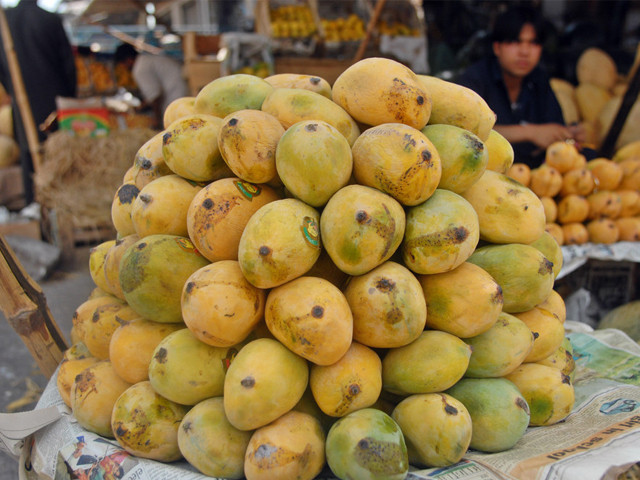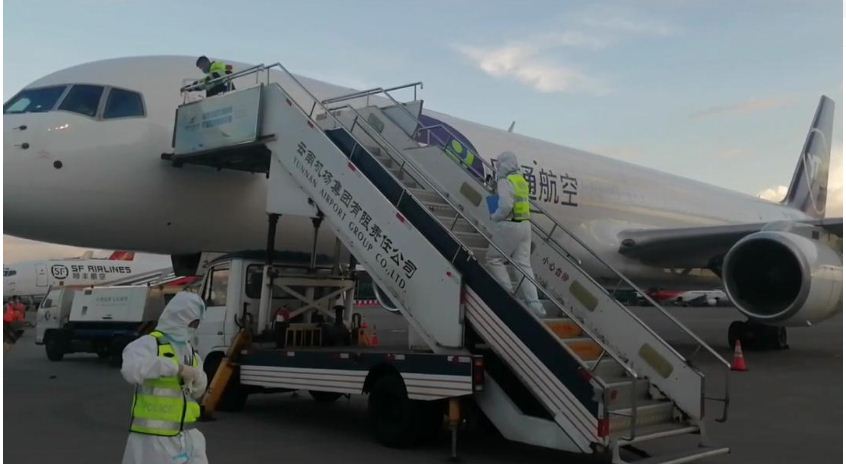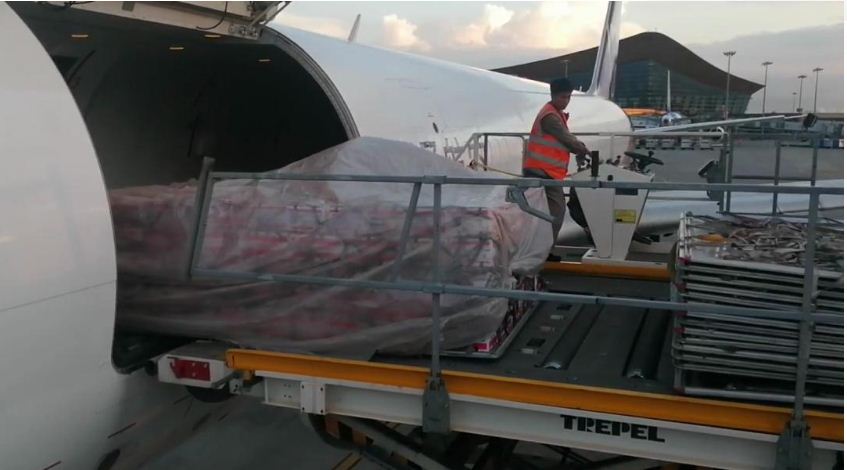First mango consignment to China after epidemic
High air freight cost, uncertainty in customs declaration caused delay

Through social media, the China Economic Net recorded the hoisting of the banner of “Batie Mango Flight” in Yunnan province on the night of August 10, the 106-minute clearance efficiency of Kunming Customs and the sweat of the courier carrying the first consignment of imported Pakistani mango this year.
As early as the beginning of July, Pakistani commercial officials in Japan and Australia began to post mangoes on Twitter, but mangoes exported to China had not arrived yet at that time. According to Pakistani media, Pakistani mango exports in 2019 hit a record of 115,000 tons, of which 120 tons were exported to Japan, a record high.

Why was the consignment delayed?
Adnan Hafez, a Pakistani who operated the first consignment of mango export to China this year, was also the manipulator of the first consignment of Pakistani kinnow exported to China during the pandemic outbreak in February.
Hafez had originally planned to export mango to China before Eidul Azha and booked a flight from Lahore to Kunming on July 29. Since the Covid-19 outbreak, he had no chance to visit China.
For him, the smooth delivery of mangoes from his hometown to Chinese customers is a credit, a greeting and an adherence to the trade between the two countries during the epidemic.
“There are a few planes this year, and the price of air freight has increased by two to three times. Besides, there are also various uncertainties in customs declaration and clearance between the two countries during the epidemic. Some of my regular clients in China didn’t dare to do it when they heard the freight was so expensive. I need to add the consignment above 1.5 tons to get a special discount. The smaller the consignment, the higher the price,” Hafez said.
According to Hafez, at present, the only cargo flight from Lahore to China is YTO, which leaves Lahore at 12:00 noon and arrives in Kunming at 7pm every Monday, Wednesday and Friday. He needs to transport fresh mangoes to Lahore Airport in the afternoon of the day before the plane takes off and provide all the information required for customs declaration.
At 2am Islamabad time on July 28, Hafez told the China Economic Net that he had found that some fruits did not match the packaging specifications during factory inspection and worried that the customer would refuse to accept.
In addition, considering postponing one flight arriving on Friday night, the customs clearance and delivery time will meet the weekends and uncertain factors will increase, hence, the first export plan to China was postponed.

Commercialisation vs comfort zone
Pakistan is the sixth largest mango producer in the world while China is the second largest. The price of imported Pakistani mangoes is 18.6 yuan per catty, which is comparatively affordable in recent years.
In June last year, the price of Pakistani mango exported by a Gwadar company was 21.8 yuan per catty.
Nowadays, in several supermarkets in Beijing, the prices of golek mango, red mango and kiett mango were 9.5 yuan,10.9 yuan and 6.98 yuan per catty respectively, which means that the retail price of mango in the Chinese market is about half that of imported mangoes from Pakistan.
“I really want to control export costs, but the air freight cannot be lowered, so I have always wanted to try sea transportation,” Hafez said.
“For kinnow, 20 days were bearable, because the shelf life of kinnow is more than 60 days. But when I told the logistics company, I wanted to ship mangoes, they all refused. Compared to kinnow, mangoes are more sensitive and have a shelf life of only around 20 days. Considering the sales period, regular shipping wouldn’t work, and no one wants to take risk for such a small quantity,” Hafez said.
The Chilean cherries exported to China by sea mostly came under the controlled atmosphere packaging (CAP) technology, that is, to keep goods fresh by increasing the proportion of nitrogen in the package.
When co-hosting the Pakistani Mango Festival with the Pakistani Embassy in China last year, the China Economic Net introduced the Chinese CAP technology.
“It takes around $1,200 to $1,500 per container. A container with CAP costs more than $7,000. Such container is not available around Pakistan and needs to be transferred to Karachi Port especially,” Hafez said.
“The volume of exports is too small. If you want to make a profit, you must have a certain quantity, sustainable and better source of land transport and logistics. The way mangoes are exported to China now is like a kid’s game, it’s not real commercialisation,” Hafez added.
THIS ARTICLE ORIGINALLY APPEARED ON CHINA ECONOMIC NET



















COMMENTS
Comments are moderated and generally will be posted if they are on-topic and not abusive.
For more information, please see our Comments FAQ